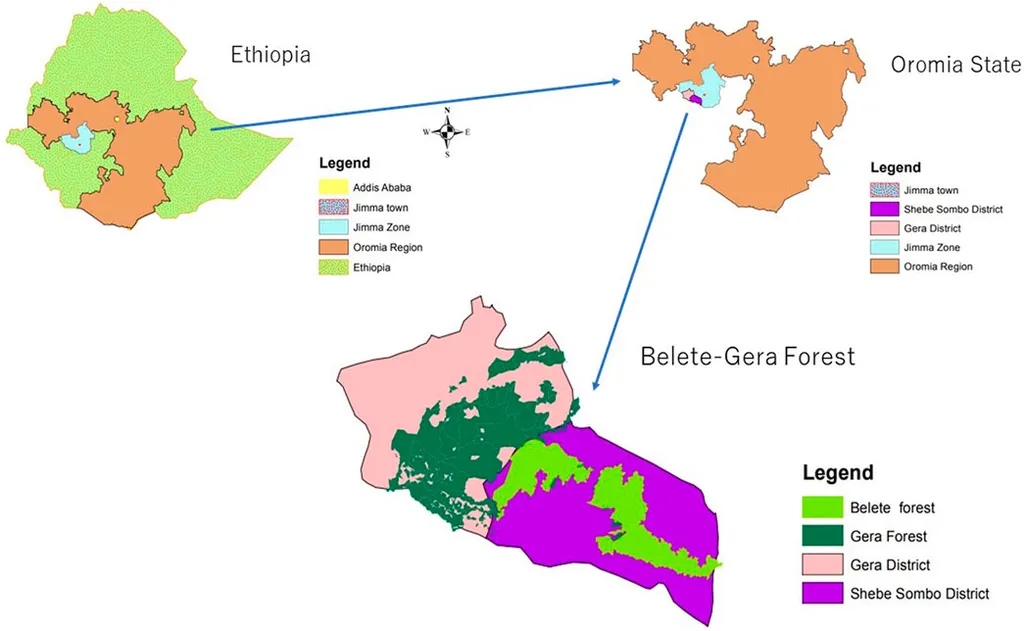In the heart of Ethiopia, where the rugged landscapes of Wondo Genet cradle vital forest ecosystems, a groundbreaking study is reshaping our understanding of sustainable smallholder forestry. Led by Teshome Kassahun of the Department of Agribusiness and Value Chain Management, this research, published in the ‘International Journal of Forestry Research’ (or ‘የአርብራችን የእቃዎች የተቋቋመ ጥናት ግዛት’ in Amharic), offers a compelling roadmap for balancing rural livelihoods with environmental sustainability.
The study paints a vivid picture of the current state of forestry in the region, revealing that agriculture dominates the landscape, while forests cling to the mountainous areas. Using advanced satellite imagery and machine learning, the team achieved an impressive 84% accuracy in mapping land use, providing a solid foundation for their analysis. “This accuracy is crucial for understanding the spatial dynamics of forestry and agriculture,” Kassahun explains, highlighting the importance of precise data in shaping effective policies.
The research delves into the intricate web of the forest product value chain, identifying key players from tree growers to retailers. Smallholders emerge as the backbone of this system, with their activities generating significant employment opportunities, particularly for women and youth. However, the study also uncovers substantial challenges, including limited access to finance, technology, and training, as well as weak governance and environmental degradation.
One of the most compelling aspects of the research is its exploration of the factors influencing smallholders’ income from tree sales. The analysis reveals that age, labor availability, land size, experience, and forest management practices all play a positive role, while distance to roads and poor market access have negative effects. This nuanced understanding of income determinants is invaluable for designing targeted interventions that can enhance smallholder livelihoods.
Looking ahead, the study offers a range of recommendations to boost smallholder income and sustainability. These include improving infrastructure and market access, strengthening cooperatives, promoting eco-certification, and fostering public–private partnerships. Kassahun emphasizes the importance of targeted support for women and youth, stating, “Empowering these groups is essential for unlocking the full potential of the forestry sector.”
The implications of this research extend far beyond the borders of Ethiopia. As the world grapples with the twin challenges of climate change and rural poverty, the insights gleaned from this study offer a beacon of hope. By demonstrating the potential of sustainable smallholder forestry to deliver both environmental and economic benefits, the research paves the way for similar initiatives in other regions.
In the words of Kassahun, “This study is not just about Ethiopia; it’s about showcasing a model that can be adapted and replicated elsewhere.” As we look to the future, the lessons learned in Wondo Genet could well shape the trajectory of sustainable forestry practices worldwide, offering a blueprint for a greener, more equitable future.

